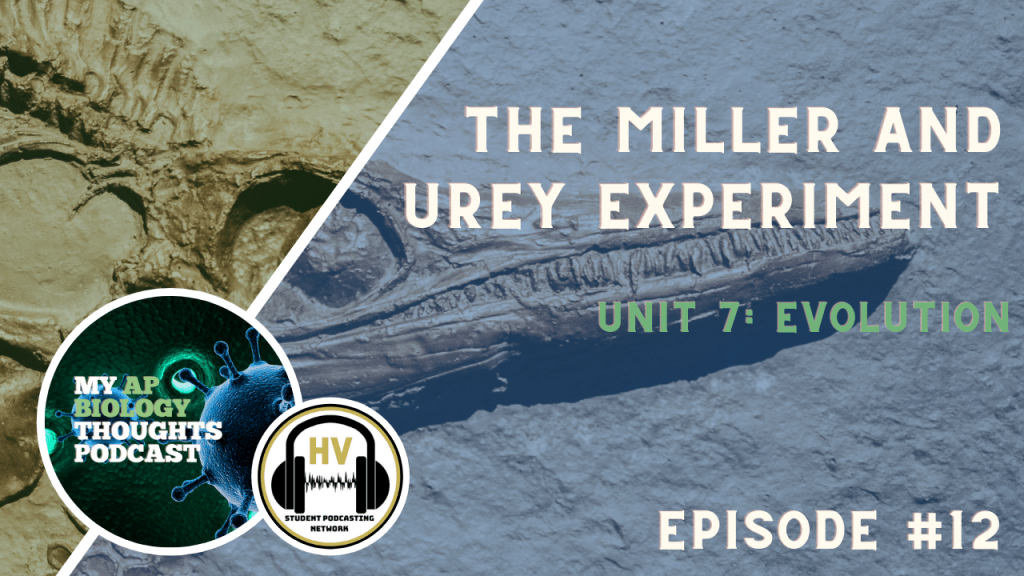Miller and Urey Experiment

My AP Biology Thoughts
Episode #12
Welcome to My AP Biology Thoughts podcast, my name is Helena and I am your host for episode 12 called Unit 7 Evolution on Miller and Urey.. Today we will be discussing the first experiment to prove that organic molecules can be formed from inorganic compounds.
Segment 1: Introduction to the Miller Urey experiment
Stanley Miller and Harold Urey were biochemists at the University of Chicago in 1952, who wanted to explore how life came to be billions of years ago. They created an experiment that was meant to simulate the conditions that they believed could have existed on young earth billions of years ago, around the time the first life was thought to have formed. The point of their experiment was to test what kind of environment needed in order to create life. Their experiment tested Primordial Soup Theory developed by both Alexander Oparin and J.B.S. Haldane. The theory states that energy (lighting and rain) energized the gases in earth’s early atmosphere to create simple organic compounds that formed an organic “soup”. This soup eventually turned into complex organic polymers and lastly life.
Segment 2: Example of Miller Urey experiment
Miller and Urey tested this theory by designing an experiment in which they used a glass flask attached with a pair of electrodes, to hold water, methane, ammonia, and hydrogen, which were the main components of young earth’s atmosphere. This flask was connected to another flask that was half filled with water, and held over a heating source. When the water was heating it vaporized and mixed with the gas mixture. As this was happening electrical sparks were fired between the electrodes to simulate lighting. This simulated atmosphere was cooled so the water condensed in order for it to sink into a U-shaped trap at the bottom of the apparatus. After a day the solution in the trap turned pink, and at the end of the week they removed the boiling flask and added mercuric chloride to prevent microbial contamination. They stopped the reaction by adding barium hydroxide and sulfuric acid. They then evaporated it to remove impurities. They found that 10%-15% of carbon present was in the form of organic compounds. Miller and Urey used paper chromatography and found that 2% of the carbon went into amino acids, including 13 of 22 amino acids essential to make proteins in living cells, glycine being the most abundant.
Segment 3: Digging Deeper into Miller Urey experiment
While the experiment only created organic molecules and not a living biochemical system (which in reality would take thousands of years), the results were still, to a large extent, enough to prove the primordial soup hypothesis. This is significant because the experiment was the first to show that organic molecules can be formed from inorganic compounds. It also inspired various other experiments, building more evidence for this theory of the origin of life.
Thank you for listening to this episode of My AP Biology Thoughts. For more student-ran podcasts, make sure that you visit www.hvspn.com. Thanks for listening!
Music Credits:
- “Ice Flow” Kevin MacLeod (incompetech.com)
- Licensed under Creative Commons: By Attribution 4.0 License
- http://creativecommons.org/licenses/by/4.0/

